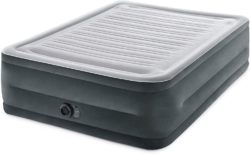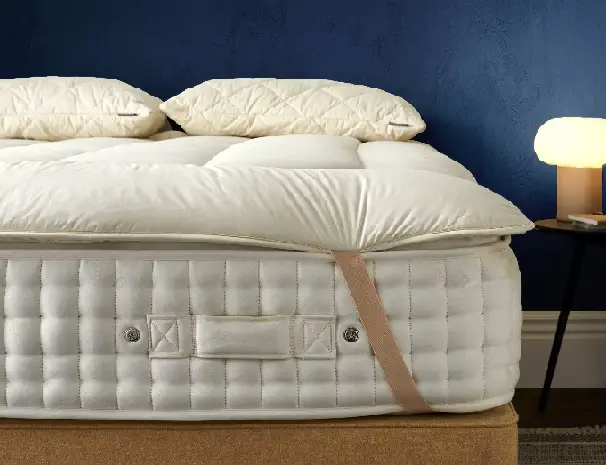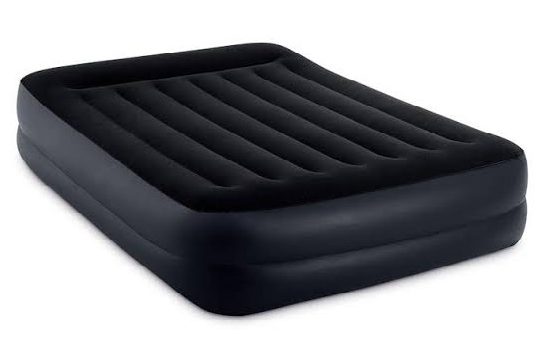Table of Contents
INTRODUCTION
A bad mattress can cause back pain. A mattress that is too firm or too soft can cause poor posture and misalignment of the spine, which can lead to back pain. In addition, a mattress that is old or worn out can also cause back pain because it may not provide adequate support for the back. It is important to choose a mattress that is firm enough to support the natural curves of your body, but not so firm that it causes pressure points. It is also important to replace your mattress every 7-10 years to ensure that it continues to provide proper support.
How to Alleviate a backache caused by a bad mattress
There are a few more things you can try to alleviate a backache caused by a bad mattress:
- Get a mattress topper: A mattress topper is a thin layer of material that goes on top of your mattress. It can provide extra support and cushioning, which may help reduce pressure on your back and improve your sleep quality. When choosing a mattress topper, there are several factors to consider.
When choosing a mattress topper, there are a few key things to consider.
- First, consider the material of the topper. Memory foam, latex, and featherbeds are all popular options, each with their own unique benefits and drawbacks. Memory foam, for example, provides excellent support and contouring, while latex is known for its durability and breathability. Featherbeds, on the other hand, are soft and plush, but may not offer as much support.
- Another important factor to consider is the thickness and density of the topper. A thicker topper will provide more support and cushioning, but may also be more expensive and difficult to move. A denser topper will also provide more support, but may feel firmer and less plush.
- Also, think about the size of the topper and how it will fit on your mattress. A topper that is too small will not provide full coverage, while a topper that is too big may be difficult to fit on your bed. It’s important to measure your mattress and choose a topper that fits properly.
- Finally, consider the firmness of the topper. Some people prefer a firmer topper for added support, while others prefer a softer topper for more cushioning. Ultimately, the best mattress topper for you will depend on your personal preferences and needs.
2.Use the right sleeping position: The way you sleep can affect your backache. Try sleeping on your side with a pillow between your knees to help align your spine and relieve pressure on your back. You can also try sleeping on your back with a pillow under your knees to help maintain the natural curve of your spine.
3.Try heat and cold therapy: Applying heat or cold to your back can help reduce pain and inflammation. Try using a heating pad or hot water bottle on your back for 20-30 minutes at a time, or try using an ice pack wrapped in a towel for 10-15 minutes at a time.
4.Stretch and exercise: Stretching and strengthening exercises can help improve your posture and reduce strain on your back. Try doing some gentle stretches or yoga poses to help relieve tension in your back muscles.
There are many stretching and strengthening exercises that can help improve posture and reduce strain on the back. Some examples of these types of exercises include:
- Planks: Planks are a great exercise for strengthening the core muscles, which are important for maintaining good posture. To do a plank, start by lying on your stomach with your elbows bent and your forearms on the ground. Then, lift your body off the ground so that you are balancing on your forearms and toes. Hold this position for 30-60 seconds, then rest and repeat.
- Bridges: Bridges are a simple but effective exercise for strengthening the muscles in your back and buttocks. To do a bridge, lie on your back with your knees bent and your feet flat on the ground. Lift your hips off the ground and hold this position for a few seconds, then lower them back down. Repeat this exercise 10-15 times.
- Shoulder blade squeezes: Shoulder blade squeezes are a great exercise for strengthening the muscles in your upper back, which can help improve posture. To do this exercise, sit up straight and squeeze your shoulder blades together. Hold this position for a few seconds, then release. Repeat 10-15 times.
- Chest stretches: Chest stretches can help improve posture by stretching out the muscles in your chest, which can become tight and restricted from poor posture. To do a chest stretch, stand with your arms at your sides and your palms facing forward. Reach your arms behind you and interlace your fingers. Then, gently pull your arms away from your body, feeling a stretch in your chest. Hold this position for 30 seconds, then release. Repeat the stretch a few times.
Cat-cow stretches: Cat-cow stretches are a great way to stretch out the muscles in your back, which can help improve posture. To do this exercise, start on your hands and knees with your back in a neutral position. Then, round your back and tuck your chin to your chest, like a cat. Hold this position for a few seconds, then arch your back and look up towards the ceiling, like a cow. Repeat this movement 10-15 times.
5.Replace your mattress If your mattress is old or has lost its support, it may be time to invest in a new one. Look for a mattress that provides good support for your back and is made of high-density foam or innerspring coils.
6.Take over-the-counter pain medication. If your back pain is severe, you may want to try taking an over-the-counter pain reliever, such as ibuprofen or acetaminophen. Be sure to follow the instructions on the package and talk to your doctor before taking any medication.



